The cure for Trilogy Fatigue: Brandon Sanderson’s Warbreaker
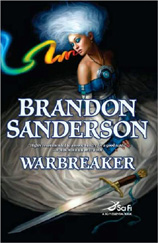 Anyone familiar with the Mistborn series knows Sanderson is expert at spinning fantasy stories packed with memorable characters, crisply detailed settings, unique magic, and major helpings of intrigue. Lately he’s been feted as the writer continuing Robert Jordan’s Wheel of Time series. While I realize that from a purely professional standpoint, the deal was a no-brainer, I hope cleaning up the WoT‘s loose ends won’t keep this talented author from giving us more of his own marvelous work.
Anyone familiar with the Mistborn series knows Sanderson is expert at spinning fantasy stories packed with memorable characters, crisply detailed settings, unique magic, and major helpings of intrigue. Lately he’s been feted as the writer continuing Robert Jordan’s Wheel of Time series. While I realize that from a purely professional standpoint, the deal was a no-brainer, I hope cleaning up the WoT‘s loose ends won’t keep this talented author from giving us more of his own marvelous work.
Those suffering from “trilogy fatigue” will be happy to learn that Warbreaker is a stand-alone story. Welcome to Hallandren, a vast and mighty empire ruled by God King Susebron. The Hallandren capital T’Telir is a city of wonders and dangers, thanks to the Awakeners, sorcerers who use the color of everyday objects to control the life force called Breath and feed their BioChromatic magic.
Appalled at the innocent lives spent to fuel the Awakeners’ magic, the true ruling family of Hallandren escaped to remote Idris. No one wears color in pious Idris. No one weaves bright tapestries, paints lush landscapes, or glazes pots to a rich sheen, all for fear of Awakener magic. And Idrians born with Awakener abilities strive to hide them at any cost.
But things are about to change.
 Talebones, a so-called semi-prozine published twice a year, is calling it quits with issue #39 , some 14 years from its debut in 1995. Details as to why editor/owner Patrick Swenson is ending publication are scant, other than this terse
Talebones, a so-called semi-prozine published twice a year, is calling it quits with issue #39 , some 14 years from its debut in 1995. Details as to why editor/owner Patrick Swenson is ending publication are scant, other than this terse 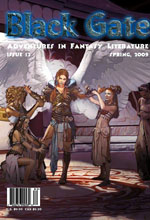 Long-time reader and professional writer Brent Knowles recently posted a review of Black Gate 13:
Long-time reader and professional writer Brent Knowles recently posted a review of Black Gate 13: Creepy experience number one happened in New Orleans in
Creepy experience number one happened in New Orleans in 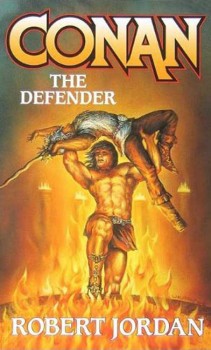 Conan the Defender
Conan the Defender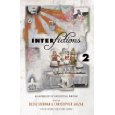 What’s interesting about a collection of “interfictions,” aka “interstitial fictions,” is that this isn’t just another descriptor (e.g., new wave fabulism, new weird, slipstream, paraspheres, fill-in-the-blank) made up by an editor or a marketing department or critic that subsequently becomes blogosphere fodder about how inaccurate and/or stupid it is. Rather, interfictions is the self-proclaimed terminology of an actual
What’s interesting about a collection of “interfictions,” aka “interstitial fictions,” is that this isn’t just another descriptor (e.g., new wave fabulism, new weird, slipstream, paraspheres, fill-in-the-blank) made up by an editor or a marketing department or critic that subsequently becomes blogosphere fodder about how inaccurate and/or stupid it is. Rather, interfictions is the self-proclaimed terminology of an actual 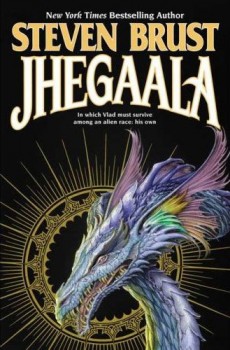 Jhegaala
Jhegaala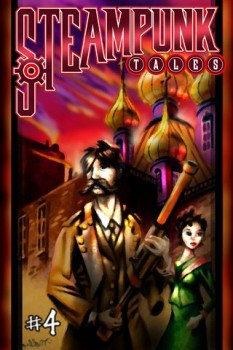 Steampunk Tales offers an interesting convergence of the new and old, a pulp magazine for the iPhone (don’t worry, non-Apple heads, there’s also a downloadable PDF version). Volume 4 features ten stories:
Steampunk Tales offers an interesting convergence of the new and old, a pulp magazine for the iPhone (don’t worry, non-Apple heads, there’s also a downloadable PDF version). Volume 4 features ten stories: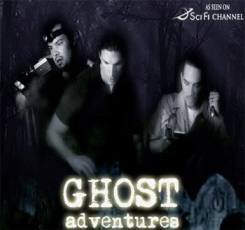 I’ll bet you’ve noticed a rather interesting trend on your cable channels lately. Namely, ghost hunting reality shows.
I’ll bet you’ve noticed a rather interesting trend on your cable channels lately. Namely, ghost hunting reality shows.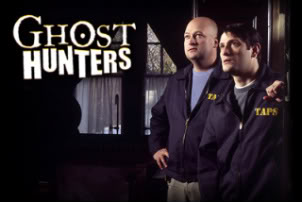 Then again, an equal number are train wrecks of over-acting we just can’t look away from.
Then again, an equal number are train wrecks of over-acting we just can’t look away from.